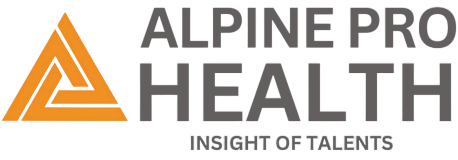In today’s evolving healthcare landscape, RCM has become a critical function for healthcare organizations. The complexities of billing, coding, and regulatory compliance can easily lead to revenue leakage if not managed strategically. A key strategy for optimizing financial outcomes is fostering strong collaboration between medical coders, billers, and compliance teams. When these three departments work in harmony, healthcare providers can ensure accurate reimbursement, reduce denials, and maintain compliance with ever-changing regulations.
This article explores how collaborative efforts among coders, billers, and compliance professionals can transform Revenue Cycle Management efficiency and drive sustainable growth for healthcare organizations.
Understanding the Core Functions
Medical Coders
Medical coders translate clinical documentation into standardized codes using ICD-10, CPT, and HCPCS systems. These codes determine what procedures were performed and which diagnoses were treated, forming the foundation for billing claims. Accurate Medical coding ensures providers receive appropriate reimbursement while reducing the risk of audits and penalties.
Medical Billers
Billers take the coded data and submit claims to insurance payers. They handle tasks like charge entry, claim submission, payment posting, and follow-up on denied or unpaid claims. Their primary role is to ensure timely and accurate payment for services rendered.
Compliance Teams
Compliance teams monitor adherence to internal policies, payer regulations, and federal guidelines such as HIPAA, the False Claims Act, and CMS directives. They review documentation practices, audit coding accuracy, and mitigate legal and financial risk through education and policy enforcement.
The Importance of Cross-Departmental Collaboration
In many healthcare organizations, coders, billers, and compliance teams work in silos. This separation can create communication gaps, inefficiencies, and inconsistent workflows. When these departments function as an integrated unit, the result is a more resilient and agile RCM cycle. Here’s how collaboration enhances each step of the process:
1. Improved Coding Accuracy Through Real-Time Feedback
Coders often rely on physician documentation to assign the correct codes. If documentation is ambiguous, they may undercode or overcode, leading to claim denials or compliance issues. By collaborating with billing and compliance teams, coders can gain real-time feedback on denied claims and compliance flags. This loop allows them to refine coding practices and communicate more effectively with clinicians.
2. Faster Claim Resolution and Fewer Denials
Many claim denials are caused by mismatched codes, missing modifiers, or incorrect patient data. Billers who work closely with coders can quickly clarify issues, leading to faster resolution. In addition, compliance teams can provide ongoing training and auditing to help billers and coders prevent repeat errors. A proactive approach drastically reduces the time and cost spent on reworking claims.
3. Enhanced Audit Readiness
CMS and commercial payers frequently conduct audits to verify that submitted claims are accurate and compliant. An integrated team of coders, billers, and compliance officers ensures that documentation, coding, and billing processes are audit-ready. Compliance teams can perform pre-bill and post-bill audits, while coders and billers can quickly adjust practices based on findings. This collaboration minimizes audit risk and financial penalties.
4. Stronger Documentation Practices
Compliance and coding teams can work together to educate providers on the importance of detailed documentation. When clinicians understand the connection between documentation, coding, billing, and revenue, they’re more likely to support complete and timely charting. This collaboration improves overall documentation quality, which directly influences coding accuracy and reimbursement outcomes.
5. Adaptability to Regulatory Changes
The healthcare industry is subject to constant regulatory updates from ICD-10-CM guideline changes to Medicare Advantage RADV audit requirements. Compliance teams often track these changes and share them with coding and billing teams. A collaborative approach ensures timely updates to workflows, software systems, and documentation practices. This adaptability helps maintain compliance while protecting revenue streams.
Practical Steps to Foster Collaboration
Healthcare organizations can take several strategic steps to break down silos and build a cohesive RCM team:
1. Establish Cross-Functional Meetings
Schedule regular meetings involving coders, billers, and compliance staff. These sessions provide a platform to discuss recent denials, regulatory updates, documentation issues, and workflow improvements.
2. Implement Shared Metrics
Create performance metrics that span all three departments, such as denial rate reduction, claim turnaround time, and audit accuracy. Shared goals foster a team-oriented mindset and increase accountability.
3. Use Technology to Integrate Workflows
Adopt RCM platforms that allow real-time communication between coders, billers, and compliance officers. Shared dashboards, task assignments, and audit logs improve transparency and reduce delays.
4. Promote Continuous Education
Encourage ongoing training sessions on topics like new coding updates, payer-specific billing rules, and compliance risks. When everyone is informed and aligned, collaboration becomes more effective.
5. Create a Culture of Open Communication
Leadership should cultivate a culture where departments are encouraged to share insights, ask questions, and resolve issues collectively. Recognize and reward cross-functional teamwork to reinforce its value.
The Financial Impact of Collaboration
Integrating the efforts of coders, billers, and compliance teams has a direct impact on a healthcare provider’s financial performance. Consider the following benefits:
- Reduced Denials and Rework Costs: Resolving denials consumes valuable resources. With fewer claim errors, organizations save time and money.
- Improved Cash Flow: Accurate coding and efficient billing lead to faster reimbursements and reduced days in A/R (accounts receivable).
- Increased Revenue Capture: Ensuring every service is properly documented and billed results in full and accurate reimbursement.
- Lower Compliance Risk: Effective collaboration reduces the likelihood of audits, fines, or reputational damage from non-compliance.
Conclusion
The healthcare revenue cycle is a complex system that depends on the seamless interaction of multiple stakeholders. Medical coders, billers, and compliance teams each play a vital role but it’s the collaboration among them that unlocks the full potential of RCM. By promoting open communication, shared goals, and continuous education, healthcare organizations can not only maximize revenue but also ensure regulatory integrity and operational efficiency.
At a time when margins are tightening and compliance scrutiny is intensifying, aligning these departments is not just a best practice, it’s a business imperative.


